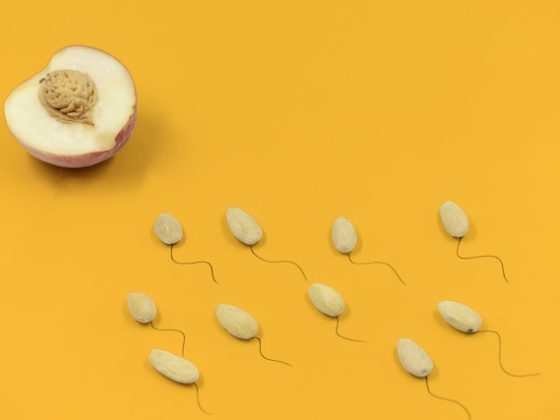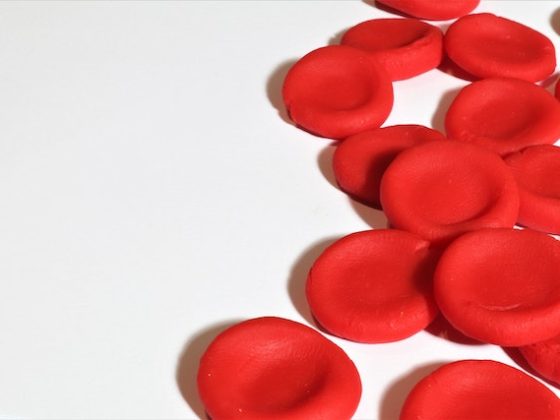Hey there! This post may contain affiliate links. As an Amazon Associate, I earn a teensy commission from qualifying purchases when you buy through these links (at no additional cost to you). For more info, please check the full disclaimer.
Breast cancer is one of the most common female cancers in US women. So awareness about the different stages of breast cancer is necessary to understand how this disease can alter your body.
Did you know that every 8th woman in the country develops breast cancer at least once during her life?
Alarming, right?
The odds of you being a target are rather high.
But don’t worry.
Breast cancer awareness is one of the best ways to arm yourself with proven facts and bust the myths.
Today’s blog post will help you understand how many stages of breast cancer there are. Plus, you’ll learn about the survival rate for each breast cancer stage.
Let’s get started.
- What is Breast Cancer?
- How to Reduce Your Risk of Breast Cancer?
- What are the 5 Stages of Breast Cancer?
- 1. Stage 0 – Non-Invasive Abnormal Cell Growth in Breast Tissue
- 2. Stage 1 – Invasive Abnormal Cell Growth in the Breast Tissue
- 3. Stage 2 – Invasive Breast Cancer With or Without Tumor
- 4. Stage 3 – Advanced Invasive Breast Cancer Spread toward Lymph Nodes
- 5. Stage 4 – Invasive Breast Cancer Metastatic Spread
What is Breast Cancer?
Before diving into the 5 stages of breast cancer, we’ll first address an important question: what exactly is it?!
Cancers are caused by abnormal cell growth in different tissues of your body. In breast cancer, the breast tissues experience a rapid cell growth with a damaged DNA. They may attack one or both breasts at the same time.
This often turns to a lump or tumor. Lumps or tumors can be of two types:
- Benign: Such tumors aren’t cancerous or life-threatening.
- Malignant: They are cancerous and dangerous. Should be treated immediately!
And this is why selecting the right treatment for a specific breast cancer stage is super important.
Because a powerful treatment will prevent cancerous cell growth to spread to neighboring tissues, lymphatic nodes, and organs. The farther cancer reaches, the more advanced it gets. This also affects the survival rate.
So, is there a way to prevent breast cancer?
Yes, there is! Read on to learn more.
Read More: 9 Suspicious Early Symptoms of Breast Cancer
How to Reduce Your Risk of Breast Cancer?

Although breast cancer can attack any woman at any age, there are certain risk factors and habits that can increase your chances of getting cancerous tumors.
Following a healthy lifestyle, taking care of your diet, being physically active, and giving up unhealthy habits can significantly help you stay safe.
Also, you should self-examine your breasts every month, especially if you’re under 39 years. Look out for any suspicious symptoms of breast cancer such as lumps, discharge, misshaped breasts, or shrunken nipples.
Here’s a complete step-by-step printable guide that explains how to do your breast self-check at home.
And if you’ve crossed your 40s, now is the time to go for your annual mammograms. This technology is completely safe and detects any early breast cancer stage signs at the right time.
Here are some other useful tips to prevent female breast cancer risk:
- Manage your weight and eat healthy, nutritious foods. Increase your olive oil intake to avoid breast cancer growth.
- Exercise weekly and stay as active as you can.
- Get enough sleep at night. Lack of sleep in menopausal women increases the chances of breast cancer.
- Keep a check on your alcohol consumption. Drink sparingly.
- High levels of estrogen because of hormone therapy contribute to breast cancer tumors. Avoid delaying menopause unnecessarily.
- Stop drinking dairy milk daily. 2 glasses can raise breast cancer risk by a whopping 80%!
Now without further ado, let’s take a look at the 5 stages of breast cancer in women.
Read More: 70+ Best Breast Cancer Prevention Foods
What are the 5 Stages of Breast Cancer?
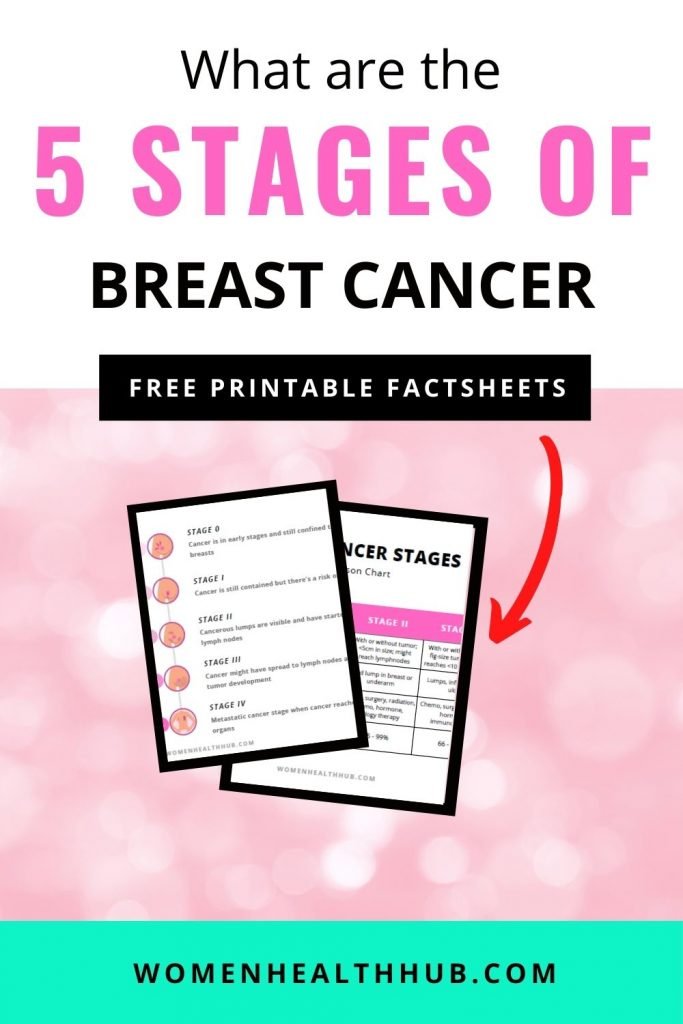
Breast cancer is a progressive disease. It grows and proliferates rapidly.
After finding the earliest signs of cancerous breast tumors, you need to act fast. Visit a doctor immediately to start a proper breast cancer stage treatment.
Your doctor might inform you of an X breast cancer stage diagnosis (X could be any of the 5 stages).
At this point, you might be too overwhelmed and unable to digest the info.
So to help you out, I’m explaining the different stages of breast cancer in women, their survival rates, and possible treatments.
This will help you prepare and know what to expect after a diagnosis.
1. Stage 0 – Non-Invasive Abnormal Cell Growth in Breast Tissue
This is one of the early stages of breast cancer.
At Stage 0, the doctor has identified “abnormal cell growth” in a particular position.
Luckily for you, cancerous cell growth hasn’t yet spread to other adjacent tissue. Which is why it’s the least harmful of all breast cancer stages.
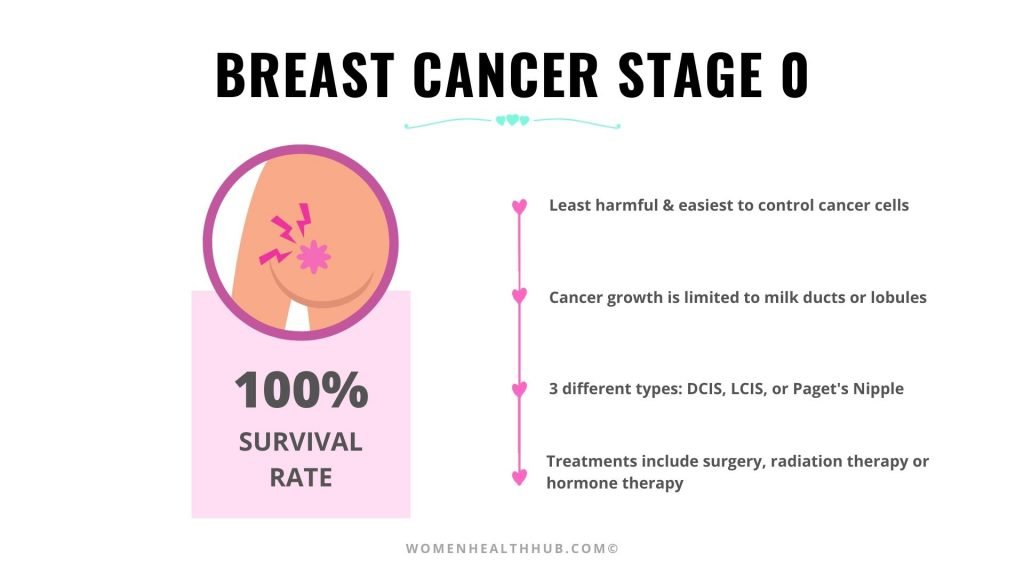
Your breast is made of various lobules (circular nodes) and of course, milk ducts that release milk during breastfeeding.
At Stage 0, the abnormal cells are confined to any of the above breast parts.
Based on that, Stage 0 breast cancer can be of 3 types:
- Ductal Carcinoma In Situ (DCIS): These are cancerous cells growing in the milk ducts and lobules of breasts.
- Lobular Carcinoma In Situ (LCIS): Such cells aren’t cancerous (despite the carcinoma in the name). But pose a high risk of breast cancer for the diagnosed woman.
- Paget’s Nipple Disease: If the breast nipple skin has any flakes or rashes, this is also an early symptom of breast cancer.
The bottomline is, in all these 3 types, cancerous cells haven’t yet spread to the entire breast.
This is a really good sign. It’s easy to control and treat this type of breast cancer stage.
Survival Rates for Stage 0:
Safe to say, the life expectancy for Stage 0 is the highest!
On-time treatment ensures a 99% chance of survival.
Those who choose to delay breast cancer treatment at this point are only allowing the disease to progress and worsen.
Stage 0 Breast Cancer Treatments:
- Lumpectomy (to remove abnormal tissue from the affected breast)
- Mastectomy (to surgically remove the entire affected breast)
- Radiation therapy (to kill off remaining cancer cells)
- Hormone therapy (to stop hormones from feeding cancer growth)
(+ free infosheet to download + print!)
2. Stage 1 – Invasive Abnormal Cell Growth in the Breast Tissue
Again, this is also an early stage of breast cancer. In fact, Stage 0 and I are somewhat similar.
At this stage, breast cancer starts showing visible symptoms but luckily, it still hasn’t spread to neighboring tissues.
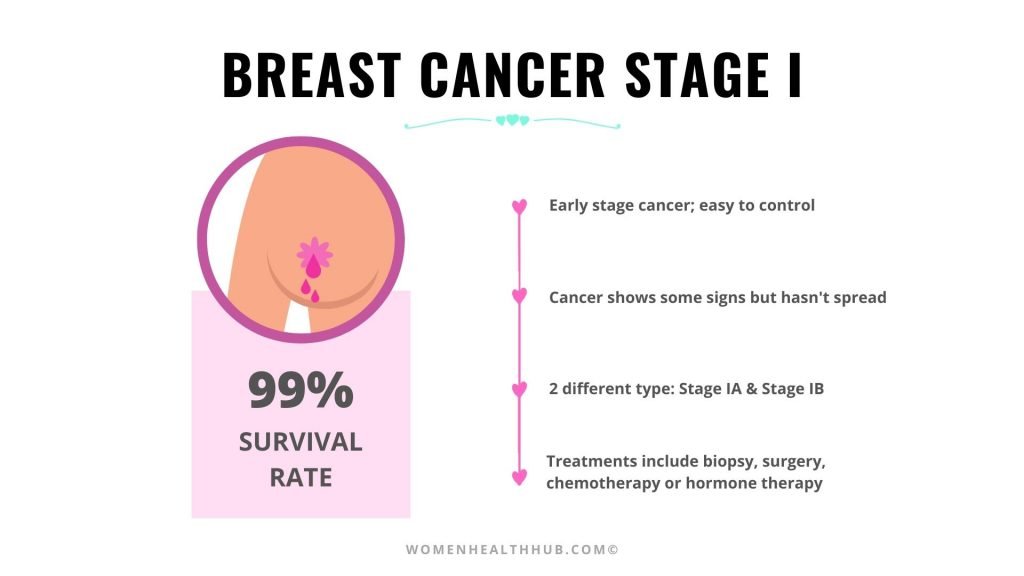
Your doctor would make the diagnosis after finding some cancerous lumps or tumors in your breast tissue.
Depending on the size of lumps and lymph nodes, you could have any of the following types of Stage I breast cancer:
- Stage IA: The tumor size is 2cm but hasn’t reached the lymph nodes yet.
- Stage IB: This means…
- you have no tumor in breast tissue;
- the tumor is less than 2cm in size; or
- cancer has spread to the lymph nodes
Same as Stage 0, you have multiple Stage I breast cancer treatment options. The key is to start the treatment ASAP to stop the spread of cancerous cells to adjacent organs.
Survival Rates for Stage I:
The survival rate of Stage I breast cancer is 98-99% if you seek timely and effective treatment. The sooner you get tumors detected through self-check or mammograms, the better.
Stage I Breast Cancer Treatments:
- Biopsy (to check cancerous cell growth in lymph nodes)
- Lumpectomy (to remove affected breast region if it’s small)
- Mastectomy (to remove the entire breast)
- Hormone therapy (to kill cancer cells that were left after surgery)
- Chemotherapy (to kill any remaining cells; used as the last resort)
3. Stage 2 – Invasive Breast Cancer With or Without Tumor
Even though it’s an early-stage breast cancer, the condition is beginning to get serious at this point.
You may notice several uncommon breast cancer signs, including a hard lump in the breast or underarms.

Now the cancer cells have spread to nearby tissues and lymph nodes. The breasts are visibly affected and surgical removal is necessary.
Depending on the size of the cancerous tumor and the position of cancer cells, you may be diagnosed with any of the following types of Stage II breast cancer:
- Stage IIA: This could mean…
- there’s no tumor but the cancer cells have reached lymph nodes
- there’s a tumor about 2cm in size and the cancer cells have reached lymph nodes
- the tumor is between 2 to 5cm in size but the cancer cells haven’t spread to lymph nodes
- Stage IIB: This diagnosis could mean…
- the tumor is between 2 to 5cm in size and the cancer cells have spread to lymph nodes
- the tumor size is bigger than 5cm but the cancer cells haven’t spread to lymph nodes
Survival Rates for Stage II:
If the cancerous growth that has spread to lymph nodes, but you get timely treatment, the chances of survival are 85%.
However, if you’re lucky enough to contain the cancer growth and prevent it from reaching the lymphatic system, your survival chances are a whopping 99%!
Stage II Breast Cancer Treatments:
- Lymph node biopsy (to check cancer cell location)
- Lumpectomy (to surgically remove affected breast part)
- Mastectomy (to surgically remove entire breast)
- Radiation therapy (to kill remaining breast cancer cells)
- Chemotherapy (to shrink tumor growth or kill cancer cells)
- Hormone therapy (to prevent hormones from growing cancer cells)
- Biology therapy (to stop a specific protein from growing cancer cells)
Read More: 10 essential health screening tests for women in 20s and 30s
4. Stage 3 – Advanced Invasive Breast Cancer Spread toward Lymph Nodes

Despite being one of the early 5 stages of breast cancer, at this point, the cancerous growth has usually spread to the lymph nodes. But luckily, your neighboring organs might still be safe.
You’d notice visible breast cancer symptoms such as lumps, inflammation, and ulcers.
Based on the position and size of tumors, you may be diagnosed with any of these 3 categories of Stage III breast cancer:
- Stage IIIA: This means…
- a tumor may or may not be present and cancer has reached between 4 to 9 lymph nodes
- tumor size is bigger than 5cm and various cancer cell groups can be seen in lymph nodes
- the tumor is larger than fig and the cancerous cells have reached lymph nodes in arms or breastbone (sternum)
- Stage IIIB: This diagnosis means…
- tumor size is usually quite large
- cancerous cells have affected at least 9 closest lymph nodes
- cancer cells have crossed the breast tissue and there may be severe inflammation
- Stage IIIC: This means that with or without a tumor…
- cancer cells have reached at least 10 closest lymph nodes
- cancer cells are reaching toward the upper chest region
- cancerous growth has spread toward the lymph nodes in the underarm and breastbone
Survival Rates for Stage III:
Depending on time, type of treatment, and how far cancer has spread, the survival rate for Stage III breast cancer is between 66 to 98%.
Yes, it’s scary!
But don’t lose hope.
There are multiple options to successfully control cancer and prevent it from reaching nearby organs.
Stage III Breast Cancer Treatments:
Your doctor would prescribe a combination of different treatments to treat this early stage breast cancer ASAP.
That’s because the cancer cells are now growing aggressively and the priority is to contain them using surgery, drugs, or radiation.
- Chemotherapy (to kill cancer cells or shrink tumor)
- Lumpectomy (to remove a part of breasts with cancerous cells)
- Mastectomy (to surgically remove the entire breast)
- Hormone therapy (drugs to stop hormones from growing cancer cells)
- Biology therapy (to inhibit a particular protein from cancer cells regrowth)
- Immunotherapy (to destroy remaining cancer cells)
Get your free fact sheet to read later! 🌺
5. Stage 4 – Invasive Breast Cancer Metastatic Spread
Of the 5 stages of breast cancer, this one’s the scariest! It’s commonly known as the Final Stage of breast cancer and medically referred to as Metastatic Cancer.
By now, the malignant cancerous growth is so rapid and aggressive that it’s almost difficult to reverse it. Unfortunately, the cancerous cell growth reaches the far tissues and spreads to neighboring organs.
At this point, cancer enters the blood vessels and affects the lungs, brain, or even bones.
Which is why following typical treatments may not be enough.
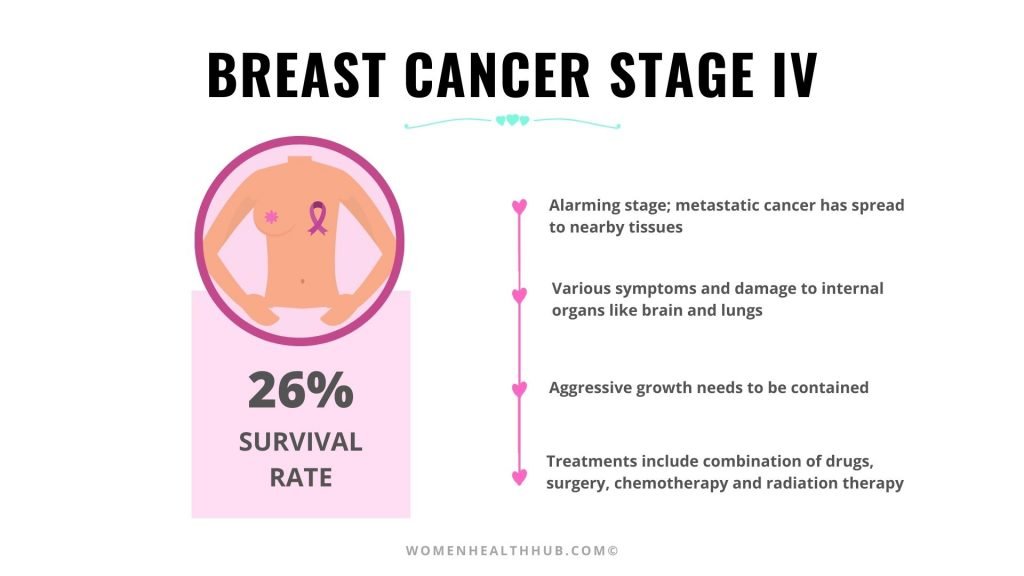
But it’s not all bad news!
Certain strong & powerful medicines and a combination of the highest technology radiations can minimize the cancer spread. If so, you can continue to live on for a couple of years.
Survival Rates for Stage IV:
Your age, immunity, and strength can play an important part in prolonging your life. The usual 5-year survival rate for this stage of breast cancer is approximately 26%.
Stage IV Breast Cancer Treatments:
There’s no treatment available to reverse or eliminate Stage IV breast cancer.
But a combination of several treatments including chemotherapy, surgery, hormone therapy, and biology therapy can help slow down the cancer spread.
This can help you live for years. But there’s always a risk of cancer cell regrowth. Doctors might change the medicines when needed to control the tumor.
- Chemotherapy (to shrink the tumor or remove cancer cell clusters)
- Lumpectomy (to surgically remove cancerous cells part from the breast)
- Mastectomy (to remove the entire breast with surgery)
- Hormone therapy (to stop specific hormones from causing cancer cells growth)
- Biology therapy (to stop a specific protein to start cancerous growth)
I hope this article helped you understand the details about the 5 stages of breast cancer.
Having awareness about later or early breast cancer stages can alert you of any suspicious signs of cancer in your breasts. This is the ultimate key to prevent severe treatments such as mastectomy or chemotherapy.
What’s something new you learned from this article? Do share it with me in the comments below!
References:
- https://www.webmd.com/breast-cancer/stage_2_breast_cancer_treatment_options
- https://www.webmd.com/breast-cancer/stage-4-treatment-options
- https://www.fredhutch.org/en/news/center-news/2014/10/stage-4-metastatic-misunderstood-breast-cancer
- https://www.ncbi.nlm.nih.gov/pmc/articles/PMC3255438/
- https://ww5.komen.org/BreastCancer/ChancesForSurvivalBasedOnCancerStage.html
- https://www.breastcancer.org
- https://www.cancer.org/cancer/breast-cancer
- https://www.cancer.net/cancer-types/breast-cancer/stages







